
FISH
From Ayu to Zander

FISH
From Ayu to Zander
Fish are not a clade, but a collection of several populations, such as lampreys, ray-finned fish, and sharks. They are animals of wildly different shapes, sizes and behaviors – from less than an inch to 52 feet, with a few, such as mudskippers even spending much of their lives on land! To further complicate matters, there are many so-called fish, like the jellyfish or starfish that aren’t fish at all. But if it has a skull and backbone, gills, and its limbs (if present) are fins, it is probably a fish!
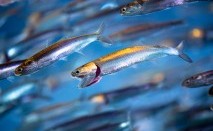 Anchovy
AnchovyAnchovies are small, oily fish that are found in scattered areas throughout the world’s oceans. They tend to be tolerant…
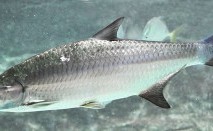 Atlantic tarpon
Atlantic tarponThese large, striking fish are typically found in tropical and sub-tropical coastal waters, estuaries, lagoons, and rivers…
The basking shark is the second largest living fish after the whale shark and can be found in all the world’s temperate…
These natives of the Paraguay Basin of Brazil are recognizable by the two distinct, longitudinal, adjacent stripes (one…
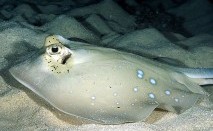 Blue-spotted stingray
Blue-spotted stingrayThe blue-spotted stingray is generally found in Indonesia to Japan, and south to Northern Australia. They are popular…
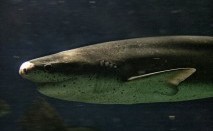 Broadnose sevengill shark
Broadnose sevengill sharkNotable for its seven gill slits (most sharks have five or rarely, six), the broadnose sevengill shark is also the only…
Cardinal tetras are native to the Orinoco and Negro Rivers of South America. These colorful fish, with their blaze of…
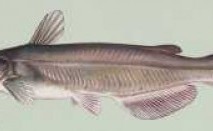 Channel catfish
Channel catfishThis species is North America’s most numerous catfish species, widespread throughout lower Canada, eastern and northern…
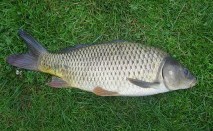 Common carp
Common carpThe common carp is native to Asia. Even though wild, native populations are considered vulnerable to extinction, it has…
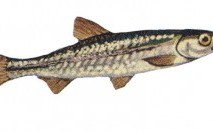 Common Emerald Shiner
Common Emerald ShinerThe emerald shiner belongs to a group of hundreds of species of small, slender, shiny fish known as “shiners.” They…
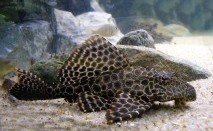 Common pleco
Common plecoAlso called the suckermouth catfish, the common pleco is an armored catfish native tropical northeastern South America…
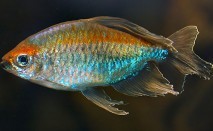 Congo tetra
Congo tetraThis native of the Congo River Basin of Africa is commonly kept in aquaria and requires soft, peat-filtered water and…
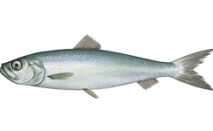 did you know?
did you know?One of the most abundant species in the world, the Atlantic herring can be found congregating in large schools on both…
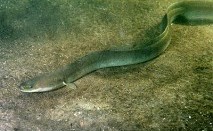 European eel
European eelThe European eel has historically been an important source of food as both adults (the famous “jellied eel” of East…
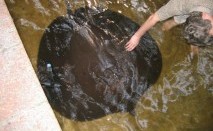 Giant freshwater stingray
Giant freshwater stingrayThis unique creature, of sometimes gargantuan proportions, is found in large rivers and estuaries in Indochina and Borneo.…
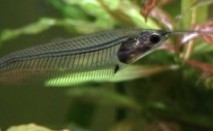 Glass catfish
Glass catfishThese unique, transparent catfish are endemic to Thailand and commonly seen in the aquarium trade. Their lack of scales…
 Goblin shark
Goblin sharkGoblin sharks are a rare, deep sea species are the only extant member of the family Mitsukurinidae. With its pink skin,…
 Great white shark
Great white sharkThese mighty predators can be found in the coastal waters of all major oceans, open ocean, as well as on long oceanic…
 Horn shark
Horn sharkHorn sharks inhabit coastal waters off the western coast of North America, from California to the Gulf of California.…
 Japanese eel
Japanese eelLike all eels in this genus, Japanese eels are catadromous, spending part of their life cycle in freshwater but spawning…
 Leopard moray
Leopard morayThis colorful moray is characterized by its narrow, curved jaws, vivid red stripes on the head, and elongated tubular…
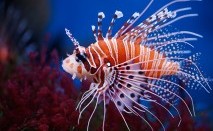 Lionfish
LionfishDespite the potent venom found in their dorsal fins, several species of lionfish are popular in the aquarium trade and…
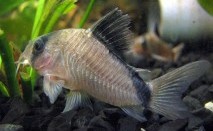 Masked corydoras
Masked corydorasAlso called bandit catfish or cory, this species is native to the Meta River Basin in Columbia. They are a small (~1.5…
 Nurse shark
Nurse sharkNurse sharks are common, bottom dwelling sharks typically found in shallow, tropical and sub-tropical, in-shore waters.…
 Pacific hagfish
Pacific hagfishThese jawless, primitive marine organisms inhabit the mesopelagic to abyssal zones of the Pacific Ocean. They are opportunistic…
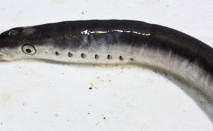 Pacific lamprey
Pacific lampreyThese anadromous, parasitic fish inhabit the Pacific coasts of North America and Asia. They spend most of the life cycle…
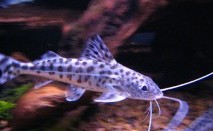 Pictus catfish
Pictus catfishThe pictus catfish is native to the Amazon and Orinoco River Basins of South America and are commonly kept aquarium fish.…
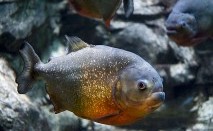 Red-bellied piranha
Red-bellied piranhaRed-bellied piranhas are omnivorous foragers and scavengers found in the Amazon Basin of South America. Their diet includes…
 Round stingray
Round stingrayAlso known as Haller’s round ray, this species inhabits the coastal waters of the eastern Pacific Ocean. They are a…
 Rummy-nose tetra
Rummy-nose tetraThese South American natives are a long-time favorite of fish-keepers and are named for the vibrant red coloration on…
 Sand tiger shark
Sand tiger sharkThis species of shark can be found in temperate and sub-tropical ocean waters worldwide. They inhabit the continental…
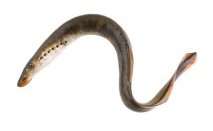 Sea lamprey
Sea lampreyThese parasitic, eel-like organisms inhabit shorelines throughout the Northern Atlantic as well as the Great Lakes. Lamprey…
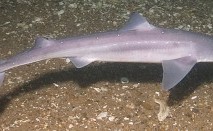 Spiny dogfish
Spiny dogfishThis common species is one of the most familiar species of the Squalidae family. It is found nearly worldwide and tends…
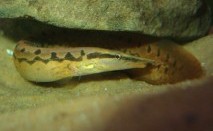 Tire-track eel
Tire-track eelThese eel-like fish are native to India, Pakistan, Sumatra, Sri Lanka, Thailand, Vietnam, Indonesia and other parts of…
 West African Lungfish
West African LungfishThis species of lungfish inhabits a wide range of habitats in West and Middle Africa, and the northern half of Southern…
 Whale shark
Whale sharkThese slow-moving, filter-feeders are the largest known living fish species. It is not unusual for them to reach over…
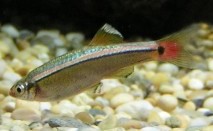 White Cloud Mountain minnow
White Cloud Mountain minnowThis hard species of minnow is native to China and is quite popular in the aquarium trade. Because of their tolerance…
 White sturgeon
White sturgeonAlso known as the Pacific sturgeon, this ancient species inhabits the west coast of North America from the Aleutian Islands…
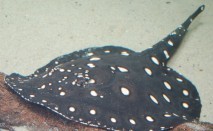 White-blotched river stingray
White-blotched river stingrayThis distinctive ray is native to the Xingu River basin in Brazil, a tributary of the Amazon River. They are thought to…
Though they aren’t obvious, fish have ears, and are able to communicate to one another through sounds. They don’t have vocal chords, but instead vibrate their swim bladders, producing popping, grunting, moaning, barking, or chirping noises. While some species of fish, like the goldfish, are silent listeners, there are over 1000 species that are known to vocalize, and some, like the gurnard who are veritable chatterboxes. While we can’t have a conversation with them (yet), it is theorized that they do it to attract mates, frighten away predators or competitors, to synchronize mating, call for help and warn others, or simply to orient themselves.
 Discover Animals is a web-based educational resource offered by the NAIA
Discover Animals is a web-based educational resource offered by the NAIA